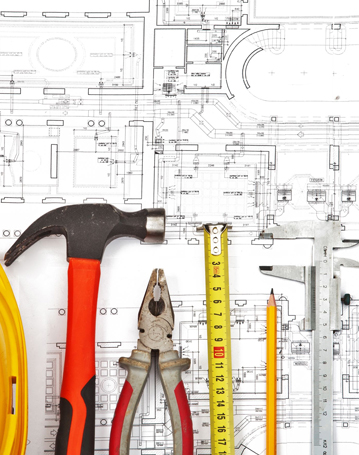Home Automation
What Is a Smart Home?
A smart home is a home outfitted with devices that can be controlled over an internet connection on one’s desktop, tablet, or smartphone. These connected devices can be appliances, lights, security systems, cameras, audio and video systems, televisions, thermostats, and even sprinklers.
Smart Home Basics
There are hundreds of devices on the markets that can make up a smart home system. From smart thermostats to Wi-Fi enabled crockpots, smart technology is revolutionizing the home. Basic elements can now be automated or controlled from a smartphone anywhere in the world.
How to Get Started with Home Automation
But hold on a minute—automating your home isn’t as simple as just downloading an app. It’ll take a little more than that to get started.
- For one thing, you’ll need a controller. Today’s home automation systems can usually be managed straight from your tablet or smartphone, but some do still require the installation of a centralized control panel somewhere in your home.
- You’ll also need access to a network in order to send messages from your controller to your home’s devices. Most home automation systems either use Wi-Fi or a simple Bluetooth connection. This, of course, depends on how you plan to use your system. For example, if you think you’ll want to interact with your devices while at work, a Bluetooth connection won’t cut it.
- Finally, your devices will need some way to receive your instructions. For some, this isn’t an issue: today’s home entertainment systems often have Wi-Fi connectivity built right in before the components leave the factory. But for others—like, say, lights—you’ll need either smart outlets or smart lightbulbs to integrate them into your home’s automation system.






That may seem like a lot of work, but honestly, it isn’t. The bottom line is that if you’ve got Wi-Fi in your home and a smartphone in your pocket, you’re already most of the way there.
- So, What Does the Future of Home Automation Look Like? You can’t talk about the future of home automation without mentioning the Internet of Things (IoT). That’s the catch-all phrase for the trend toward embedding sensors and microchips in everyday objects in a way that allows them to be connected to a network—like, say, the Internet. With the Internet of Things, your washing machine, for example, can send an alert to your phone when it’s time to move your clothes over to the dryer.
- In just 40 years, complete home automation systems have gone from high-tech curiosities to affordable and accessible modern home conveniences. They’re so simple now that just about anyone can take advantage of home automation to simplify their lives and enjoy what was once a luxury of the wealthy and tech-savvy. In another 40 years, we’ll wonder how we ever lived without them.